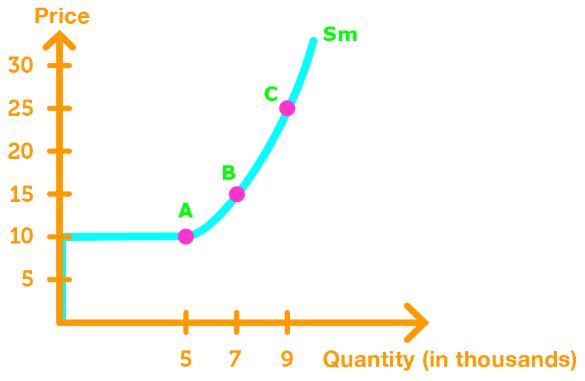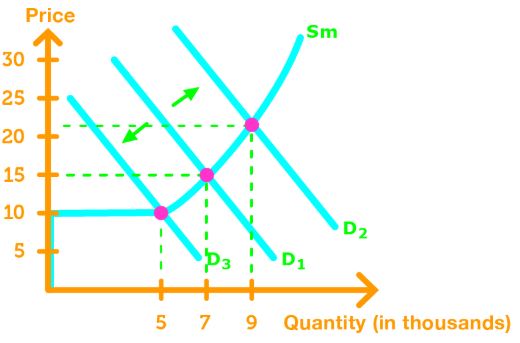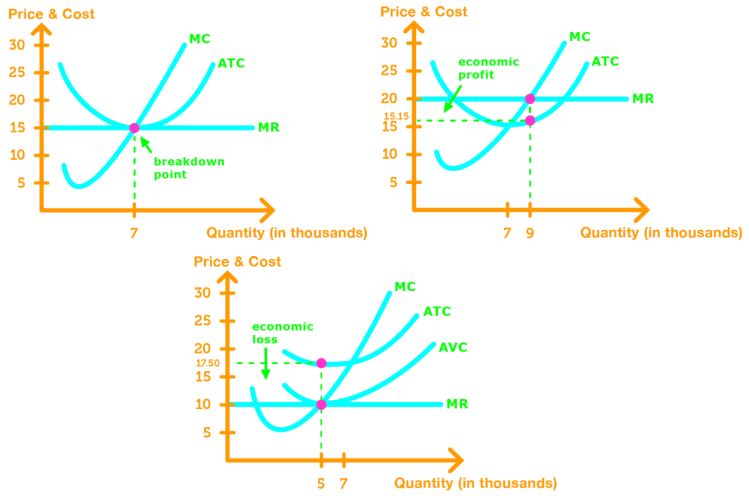The short-run market supply curve shows the quantity supplied by all the firms in the market as price varies.

The firms will do one of 3 things in the supply curve:
- At the shutdown price, firms will choose to either choose to shutdown, or produce the shutdown quantity.
- When the price is below the shutdown price, firms will shutdown and not produce.
- When the price is above the shutdown price, firms will produce at the given output.
Short-Run: Equilibrium, & Market Demand Changes
The short-run supply curve and the market demand curve determines the equilibrium price and quantity.

Note: The equilibrium is found at the intersection.
Recall that the market demand curve can change in 2 ways.
Case 1: The demand increases, causing the curve to shift rightward. The result would be an increase to both the market price and the output.
Case 2: The demand decreases, causing the curve to shift leftward. The result would be a decrease to both the market price and the output.

Short Run: Economic Profit & Loss
There are 3 possible outcomes in the short run for firms who are perfectly competitive.
Case 1: Suppose the demand curve is in . Then the firm breaks even and does not gain any profit or loss. This is because p = ATC at the profit-maximizing output.

Case 2: Suppose the demand curve is in . Then the firm gains economic profit. This is because p > ATC at the profit-maximizing output.

Case 3: Suppose the demand curve is in . Then the firm has economic loss. This is because p < ATC at the profit-maximizing output.








